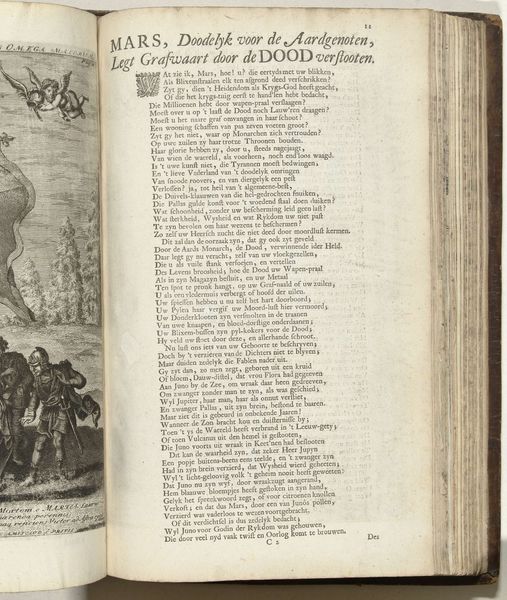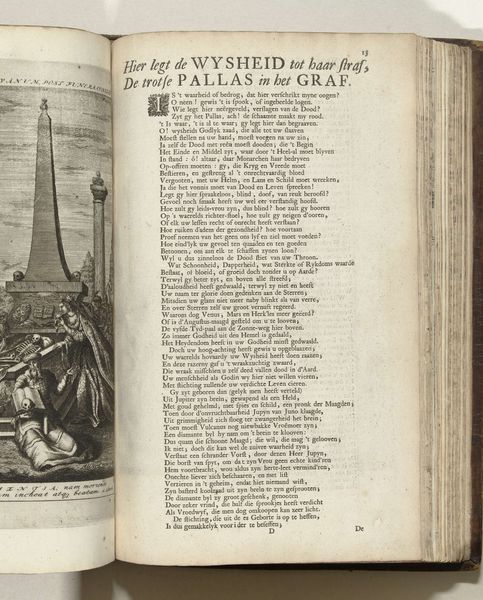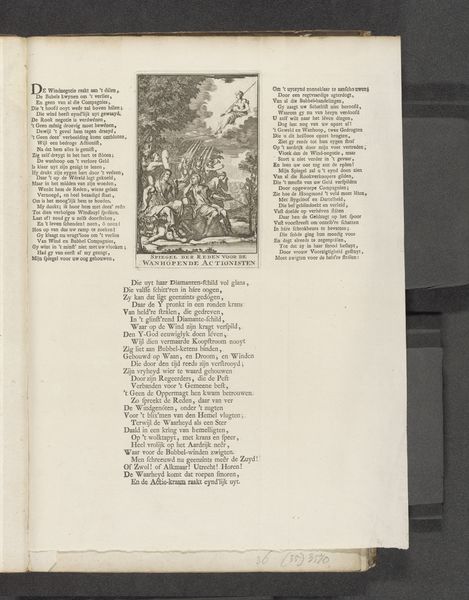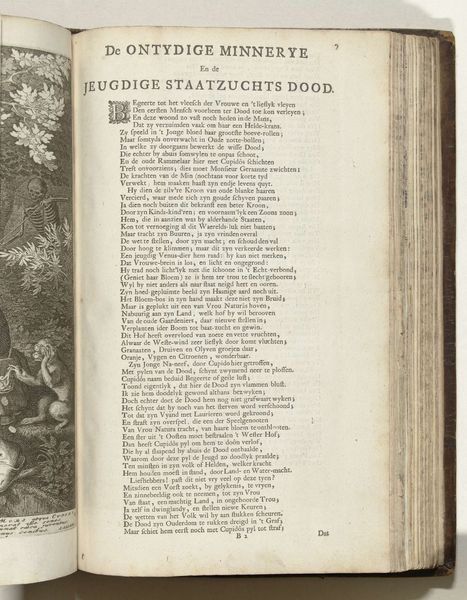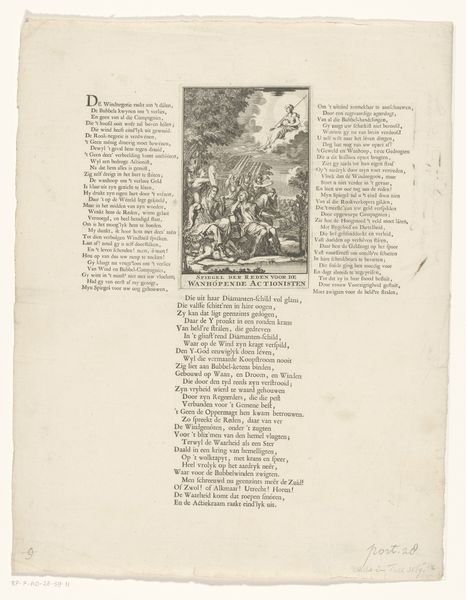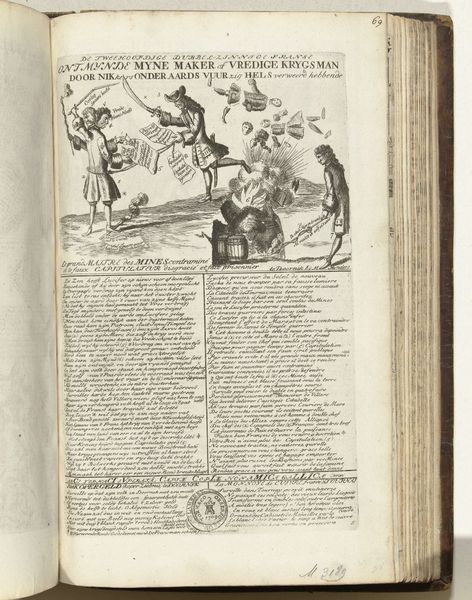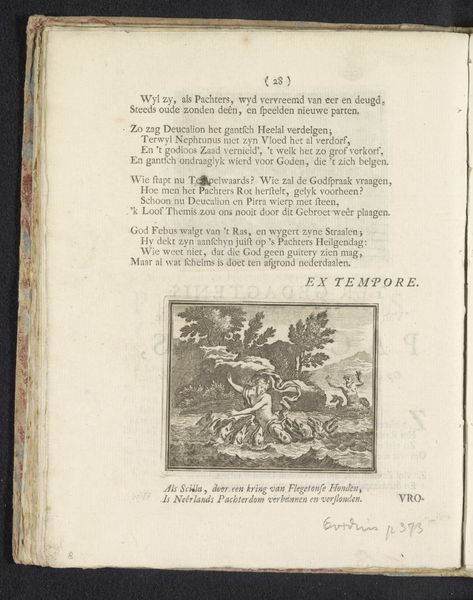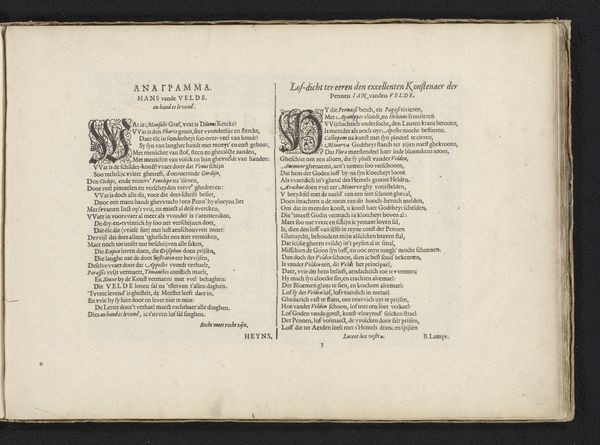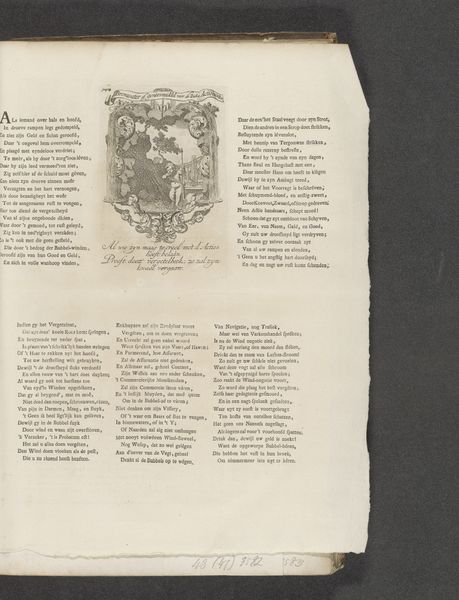
Vers bij de prent met het geopende graf van Hercules, ca. 1707-1708 1707 - 1708
0:00
0:00
abrahamallard
Rijksmuseum
print, textile, engraving
#
baroque
# print
#
textile
#
history-painting
#
engraving
Dimensions: height 315 mm, width 200 mm
Copyright: Rijks Museum: Open Domain
This illustrated poem about Hercules was made around 1707 in the Netherlands by Abraham Allard. Allard uses his mythological subject to investigate the relationship between power, virtue and death. Visual codes are used to create meaning: The image shows Hercules' tomb but the text dwells on his strength and virtue. What does it mean to be a hero? Is Hercules a hero because of his great deeds, or in spite of them? The poem's use of mythological and historical associations suggests Hercules cannot overcome death through strength alone. Allard’s poem reflects a culture grappling with new political and social structures. Is the poem a commentary on the loss of power, or on the shifting values of Dutch society? The poem uses classical imagery to reflect on contemporary themes. To understand this work better, we can consider the social and institutional context. The historian might use research resources such as contemporary political writings, books of poetry, and biographical records to better understand the artist and his world.
Comments
No comments
Be the first to comment and join the conversation on the ultimate creative platform.
